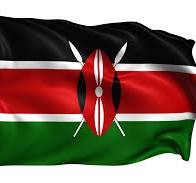Did You Know About Kenya Public Debt: Kenya faces a substantial domestic and foreign debt, estimated at around 70% of its GDP.

Public Debt: Kenya faces a substantial domestic and foreign debt, estimated at around 70% of its GDP. Debt repayments consume a significant portion of the government's budget, impacting its ability to fund development projects.
Kenya continues to grapple with a substantial public debt burden, a critical issue that significantly impacts the nation's economic stability and its capacity to fund essential development projects. As of March 2025, Kenya's public debt hit a record KSh 11.36 trillion, equivalent to approximately 70% of its GDP. This level is significantly above the 55% threshold considered sustainable for developing economies, highlighting the precarious fiscal situation.

The Scope of Kenya's Public Debt-
Kenya's public debt comprises both domestic and foreign components. By May 2025, domestic debt reached KSh 6.20 trillion, surpassing external debt for the first time. This indicates an increasing reliance on short-term domestic borrowing instruments like Treasury Bills, which accounted for over 15% of total domestic debt. While a stronger Kenyan shilling in early 2025 offered some relief in external obligations in local currency terms, the foreign debt load continued to rise in USD terms, reaching a record high of USD 40.51 billion by March 2025.
The rapid accumulation of debt over the past seven years has been driven by several factors, including:
-
Large infrastructure projects: Many ambitious infrastructure initiatives, while intended to spur economic growth, have been financed through significant borrowing.
-
Pandemic-related expenditures: The COVID-19 pandemic necessitated increased government spending on healthcare and economic relief measures.
-
Rising debt service costs: As debt levels grow, so do the costs of servicing that debt, creating a vicious cycle.
Debt Repayments and Their Impact on the Budget-
The most immediate and severe consequence of Kenya's high public debt is the massive portion of the government's budget consumed by debt repayments. For the fiscal year 2023/24, debt servicing reached KSh 1.6 trillion, significantly surpassing development spending by more than 1.5 times. In the current fiscal year (2024/25), by April 2025, Kenya had already paid KSh 1.25 trillion in debt interest.
Looking ahead, for the fiscal year 2025/26, the Treasury is projected to spend a staggering KSh 1.09 trillion on public debt repayments. This figure marks an KSh 94.2 billion increase from the previous fiscal year and represents the single biggest expenditure item in the national budget.
This overwhelming debt servicing burden severely constrains the government's ability to fund crucial development projects and essential public services. Resources that could otherwise be allocated to sectors vital for human capital development and economic growth, such as education, healthcare, social protection, and infrastructure, are instead diverted to meet debt obligations. This "crowding out" effect can stifle economic growth by limiting public investment and also reduce the government's fiscal space for responding to future shocks.
For instance, the 2025/26 budget shows development expenditures, including allocations to domestic and foreign financed projects, at KSh 693.2 billion, significantly less than the KSh 1.09 trillion allocated for debt repayments. Critical programs have reportedly been denied funds in favor of debt obligations, leading to public dissatisfaction and contributing to the ongoing unrest.
Efforts to Manage Debt and Recommendations-
The Kenyan government, in collaboration with international partners like the IMF and World Bank, is implementing strategies to address the debt challenge.
-
Fiscal Consolidation: The government aims to reduce the fiscal deficit from an estimated 5.7% of GDP in FY 2024/25 to 4.8% in FY 2025/26, as part of its fiscal consolidation efforts. The goal is to bring the debt-to-GDP ratio down to around 55% by 2028.
-
Revenue Mobilization: Recommendations from the World Bank emphasize broadening the tax base, rationalizing tax exemptions, and improving tax compliance to yield additional revenue. The Kenya Revenue Authority (KRA) has been on an aggressive drive, leveraging digital initiatives and dispute resolution to meet ambitious targets.
-
Expenditure Rationalization: Improving the efficiency and equity of public spending, reforming the wage bill and allowances, and streamlining public financial management are also crucial.
-
Diversified Borrowing: The government is seeking to diversify sources of external borrowing, targeting concessional loans (with more favorable terms), diaspora bonds, and Environmental, Social, and Governance (ESG) debt instruments.
-
Debt Management Strategy: The 2025 Medium-Term Debt Management Strategy (MTDS) outlines plans to reduce costs, minimize risks, and deepen the domestic debt market.
-
IMF and World Bank Support:
Both the IMF and World Bank are actively engaged in providing technical assistance and policy recommendations. The IMF conducted a "Diagnostics Mission" in June 2025 to identify governance challenges related to corruption that impact debt sustainability. The World Bank's latest Kenya Public Finance Review (May 2025) suggests that prioritizing fiscal, governance, and structural reforms could significantly reduce the debt-to-GDP ratio while generating jobs.
Challenges and Outlook-
Despite these efforts, significant challenges remain. The rapid buildup of domestic debt, particularly in short-term instruments, increases refinancing risk and the debt service burden. Heavy domestic borrowing also tends to crowd out private sector credit, hindering overall economic growth. Social unrest over tax hikes, as witnessed in June 2024 and June 2025, also poses risks to revenue collection strategies.
While Kenya successfully navigated a potential default on a $2 billion international bond in February 2025, demonstrating some investor confidence, the underlying fiscal pressures persist. The government's ability to balance its debt obligations with the urgent need for development spending and public services will be critical for maintaining economic stability and addressing the deep-seated public discontent. Without decisive and prudent policy action, Kenya risks falling into a debt trap where new borrowing primarily fuels interest payments rather than fostering genuine development and growth.
- Questions and Answers
- Opinion
- Motivational and Inspiring Story
- Technology
- Live and Let live
- Focus
- Geopolitics
- Military-Arms/Equipment
- Securitate
- Economy
- Beasts of Nations
- Machine Tools-The “Mother Industry”
- Art
- Causes
- Crafts
- Dance
- Drinks
- Film/Movie
- Fitness
- Food
- Jocuri
- Gardening
- Health
- Home
- Literature
- Music
- Networking
- Alte
- Party
- Religion
- Shopping
- Sports
- Theater
- Health and Wellness
- News
- Culture

